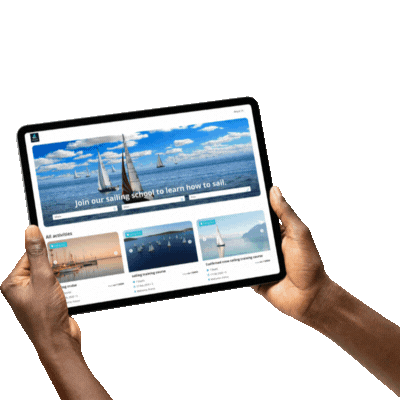Outbound training has been quick to grow in popularity as a tool for training and team building. If you’re not sure about this, read why you should definitely try it. Although a departure from conventional methods, it definitely helps to put employees in the right frame of mind to observe and learn.
If you’re planning an outbound trip anytime soon, it is most likely being organized by a third party. So all aspects, right from the welcome to the closing speech will be taken care of by them. There is no doubt that organizers and facilitators are equipped to deal with the different learning needs of teams. And you can be assured that they’ll do an impeccable job of it.
But there are a few decisions that you can be more hands-on with while planning the trip.
Clear learning objectives
Before you plan any other detail, think about what you plan to achieve from the trip? Is it a morale boost, problem-solving, teamwork, communication, conflict resolution? Consult business heads and senior employees. And discuss the same with the learning partner. Make sure you communicate your objectives and they understand it.
This is because tasks and activities need to be planned with a clear focus on the objectives. Even if the activities being used are the same, the facilitator can modify them in different ways to satisfy your needs.
With every outbound trip, try to have a maximum of 2 objectives. Too many could dilute the focus and render the final outcome ineffective.
Selecting the location

While outbound setups share the same broad goal, the differences in the activities they offer need to be considered. The location needs to be chosen so that it aligns with the learning objective. For e.g.- if you want to motivate your employees to work together and take part in camping activities like pitching tents, cooking food etc., a luxury resort will not be suitable for it.
There is nothing wrong with taking your team out to a resort where they can relax and rejuvenate if that is your objective. A laid-back environment can also be more conducive to conducting training sessions. So it depends on what angle you want to work.
Selecting your learning partner
While looking for a partner to suit your training needs, consider these points to make an informed decisions:
- Is the organizer certified and well qualified?
- Do they have experience working with other companies in your industry?
- Can they provide reliable referrals who can vouch for the quality of their work?
- Can the activities being provided be adjusted to your group size without compromising on the quality of learning?
A good way to verify how dedicated they are to helping you achieve your objectives is to start off with just one objective. And once you have a plan/itinerary in hand, request for addition/change in objectives. An organizer that does not modify his activities when you change the objectives is probably not very committed to the cause. A good operator needs to have multiple options to suit your training needs.
Choosing a facilitator
This is another decision that should be thought of at the start. The facilitator needs to be trained and experienced for the job, no doubt. But he should also be well-informed about the learning objectives and desired outcomes. Get in touch with them much earlier, to discuss the flow of the program.
Also, consider the facilitator-to-participant ratio. For a learning program, a ration of 1:20 or 1:25 could be ideal.
Communication with the participants
Even if the participants have undergone outbound training before, they should be told about the specific aims of the particular program. Talk to them if they have any reservations prior to the program and discuss them in private if need be.
If any of the participants wish to ask about the agenda earlier, it is okay to give them any details that are important to them. The point of the program should be to encourage them to step out of their comfort zones, willingly.
Make sure the team approaches the program with an open mind, and ready to absorb the learning.
Measuring performance

Set up realistic benchmarks to measure the outcome of the program by. Your learning partner should be able to help you quantify these and report back with detailed feedback. Make sure you do these calculations both before and after the program, without which you won’t have benchmarks to measure the actual performance against.
Actively participate in the reflection session. If you’re not part of the program, make sure a senior executive is present to report back with a neutral perspective on the outcome.
Follow up
A single trip cannot be treated as a quick fix. Behavioral changes need to be given time to take place. Be prepared to follow up the trip with regular assessments and further trips.
We, at Advensure, understand how important your employees are to you. With this in mind, we’ve got several outbound training options to choose from, with customizations to suit your objectives.




